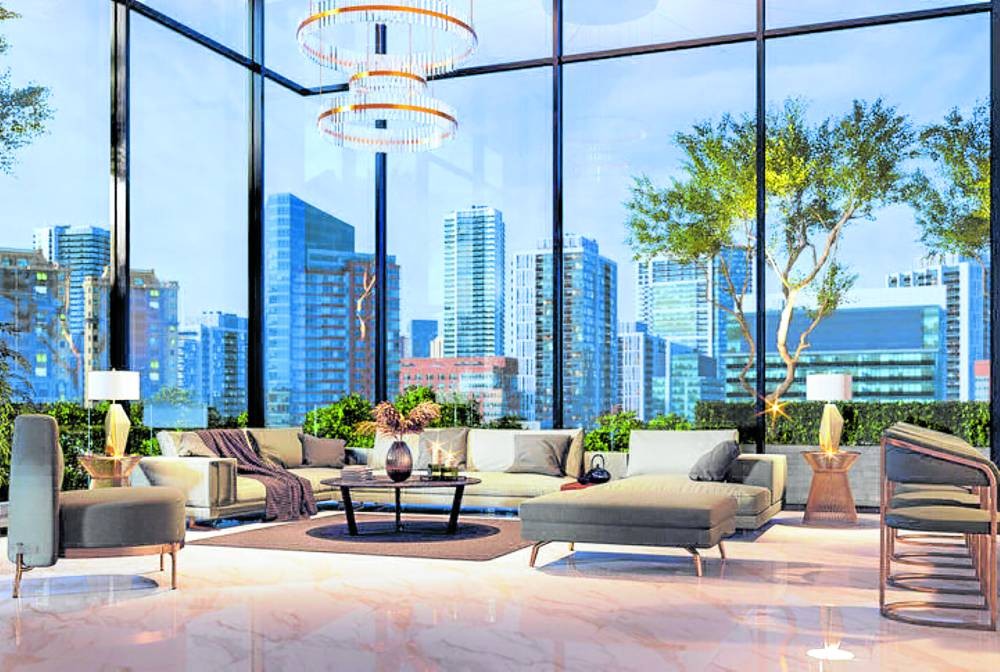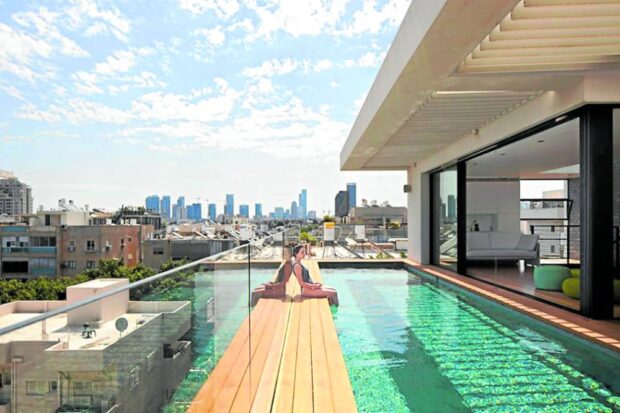Is high-rise living for Filipinos?

Prof. Grace C. Ramos
Read more: https://business.inquirer.net/427720/is-high-rise-living-for-filipinos#ixzz8GopuAwZh
Follow us: @inquirerdotnet on Twitter | inquirerdotnet on Facebook
With the global economic system resetting at full speed, cities around the world continue to converge in urban hubs to project a global look.
High-rise buildings define central business districts that host the knowledge and services sectors. Vertical developments are rising in regional urban centers that host foreign direct investments.
From the monumental structures of the ancient world to the high-rise buildings in the United States in the 1880s, building heights express human aspirations for greater goals. The competition among countries to have the tallest building in the world in recent decades reflects the quest for global recognition and strategic roles in the international power structure.
ADVERTISEMENT
At present, high-rise buildings have multiple definitions but the National Building Code of the Philippines simply makes references to tall buildings without explicitly defining them in terms of height or number of stories. But buildings of more than five stories are required to have elevators.
The American Life Safety Code 101 defines a high-rise as “an “occupied floor more than 75 feet above the lowest level of fire department vehicle access” (National Fire Protection Association, 2018). Local Philippine ordinances refer to a residential zone category R5 for medium and high-density multi-family dwellings.
Vertical developments in cities
Multi-story building logically addresses land price and availability issues in densely built-up city centers. High-rises resolve distance issues as compact city development reduces travel time to workplaces and living amenities. They support the urban agglomeration process to promote productivity and efficiency.
ADVERTISEMENT
Infill or in-city housing projects often opt for vertical developments while new town projects in the peripheries of cities offer low-rise alternatives. Urban renewal projects with housing components restore vibrancy to deteriorating parts of a city by introducing new architecture that harmonizes with the visual rhythm and skyline of surrounding urban elements.
While high-rises maximize land value, which accounts for a huge percentage of real estate prices, its cost of construction increases significantly because of structural, mechanical and other utility and safety systems. Elevators, fire sprinklers and waste management systems are among the requirements that significantly increase cost per square meter.

Multi-story building logically addresses land price and avail- ability issues in densely built-up city centers. (HTTPS://WWW.NEWINHOMES.COM)
Shared responsibility over common spaces, referred to in the Condominium Act, Republic Act 4726, amended by RA 7899 and Presidential Decree 957, is a huge shift from the independence of each household in a more territory-based low-rise setting.
Moving from a one-story house to a 20-story residential condominium will definitely require occupants to go through a process of learning and unlearning. More importantly, the huge capital outlay translates to purchase terms that do not match the affordability profiles of low-income homeless households.
Individual and household-level adjustments
Low-rise houses build a strong relationship with the ground, the outdoors and the street that become extensions of living spaces. Parents can easily look after their children who use the adjacent outdoor areas for playing. Neighbors use sidewalks and streets as social spaces, available for community activities on a daily basis.
A relative sense of independence is achieved through the personalization of spaces to respond to specific needs. Incremental building and improvement of living spaces are better accommodated in one- to two-story houses.
A village organized around open and communal spaces on land provides the foundation for the emergence of a shared language that holds the community fabric together. Co-management of shared spaces is achieved by a strong delineation of private and public spaces.
Choice is exercised by the organization of activity spaces in relation to the outdoors. Greater control over household territories based on delineated lots addresses privacy issues.

(HTTPS://WWW.DECOIST.COM)
In the more compartmentalized living spaces in condominiums, the hallways, elevators, and lobbies are common spaces that lead to chance encounters. But they do not necessarily replace social relationships afforded by low-rise and street-level housing.
Other amenities like swimming pools and fitness centers are, in some cases, provided to address social needs. Natural surveillance is replaced by hired security personnel and closed-circuit television systems.
The co-management of spaces by a condominium association underpinned by the community fabric is requisite to harmonious co-living and effective real estate management.
City-level implications
Exo-infrastructure support is essential to integrate high-rise residential buildings into the existing neighborhood. Residents often look for the so-called “third spaces” (Oldenburg, 2001) located between homes and workplaces. In high-rise living, third spaces, such as cafes and restaurants in the vicinity, provide additional physical and social spaces beyond the condominium project area.
Section 707 of the National Building Code of the Philippines provides that “the maximum height and number of stories of every building shall be dependent upon the character of occupancy and the type of construction, as determined by the Secretary considering population density, building bulk, widths of streets and car parking requirements”.
This provision implies the need to consider the sites’ carrying capacities in terms of vehicular traffic, infrastructure and utility systems.
New high-rise developments have gentrifying effects that lead to the alteration of the urban form and marginalization of original residents. High-rises result in high-density neighborhoods where risk management becomes more challenging.

(HTTPS://WWW.CONDOCONTROL. COM)
Exposure to hazards such as earthquakes and fire is higher with the concentration of people in one geographical space. In some cases, view corridors and heritage conservation goals are compromised to allow revenue maximization.
Large-scale projects and high-density developments also affect long-term adaptation and agility of places. Big block developments make places rigid and less able to transform when dynamic variables set in.
Minimizing transition pains
Going for high-rise housing has advantages and disadvantages. Strategies adopted by some cities to reduce adverse effects include incentive zoning that allows the mixing of uses and target markets in one building. Green and Smart Building features have been integrated to address climate change and health risk management issues.
Social preparation of households moving from informal settlements to medium- and high-rise housing is essential to achieve livability goals. Land banking to secure urban land for public housing makes infill housing strategies viable. National economic development strategies anchored on equity and inclusion principles will be reflected in what we see as the urban form.
References:
Oldenburg, Ray. (2001). “Celebrating the Third Place: Inspiring Stories about the ‘Great Good Places’ at the Heart of Our Communities”, Marlow & Company.
National Fire Protection Association. (2018). NFPA Life Safety Code 101, 2018.
National Building Code of the Philippines and its Implementing Rules and Regulations.
">
Is high-rise living for Filipinos?
Read more: https://business.inquirer.net/427720/is-high-rise-living-for-filipinos#ixzz8GopuAwZh
Follow us: @inquirerdotnet on Twitter | inquirerdotnet on Facebook
With the global economic system resetting at full speed, cities around the world continue to converge in urban hubs to project a global look.
High-rise buildings define central business districts that host the knowledge and services sectors. Vertical developments are rising in regional urban centers that host foreign direct investments.
From the monumental structures of the ancient world to the high-rise buildings in the United States in the 1880s, building heights express human aspirations for greater goals. The competition among countries to have the tallest building in the world in recent decades reflects the quest for global recognition and strategic roles in the international power structure.
ADVERTISEMENT
At present, high-rise buildings have multiple definitions but the National Building Code of the Philippines simply makes references to tall buildings without explicitly defining them in terms of height or number of stories. But buildings of more than five stories are required to have elevators.
The American Life Safety Code 101 defines a high-rise as “an “occupied floor more than 75 feet above the lowest level of fire department vehicle access” (National Fire Protection Association, 2018). Local Philippine ordinances refer to a residential zone category R5 for medium and high-density multi-family dwellings.
Vertical developments in cities
Multi-story building logically addresses land price and availability issues in densely built-up city centers. High-rises resolve distance issues as compact city development reduces travel time to workplaces and living amenities. They support the urban agglomeration process to promote productivity and efficiency.
ADVERTISEMENT
Infill or in-city housing projects often opt for vertical developments while new town projects in the peripheries of cities offer low-rise alternatives. Urban renewal projects with housing components restore vibrancy to deteriorating parts of a city by introducing new architecture that harmonizes with the visual rhythm and skyline of surrounding urban elements.
While high-rises maximize land value, which accounts for a huge percentage of real estate prices, its cost of construction increases significantly because of structural, mechanical and other utility and safety systems. Elevators, fire sprinklers and waste management systems are among the requirements that significantly increase cost per square meter.

Multi-story building logically addresses land price and avail- ability issues in densely built-up city centers. (HTTPS://WWW.NEWINHOMES.COM)
Shared responsibility over common spaces, referred to in the Condominium Act, Republic Act 4726, amended by RA 7899 and Presidential Decree 957, is a huge shift from the independence of each household in a more territory-based low-rise setting.
Moving from a one-story house to a 20-story residential condominium will definitely require occupants to go through a process of learning and unlearning. More importantly, the huge capital outlay translates to purchase terms that do not match the affordability profiles of low-income homeless households.
Individual and household-level adjustments
Low-rise houses build a strong relationship with the ground, the outdoors and the street that become extensions of living spaces. Parents can easily look after their children who use the adjacent outdoor areas for playing. Neighbors use sidewalks and streets as social spaces, available for community activities on a daily basis.
A relative sense of independence is achieved through the personalization of spaces to respond to specific needs. Incremental building and improvement of living spaces are better accommodated in one- to two-story houses.
A village organized around open and communal spaces on land provides the foundation for the emergence of a shared language that holds the community fabric together. Co-management of shared spaces is achieved by a strong delineation of private and public spaces.
Choice is exercised by the organization of activity spaces in relation to the outdoors. Greater control over household territories based on delineated lots addresses privacy issues.

(HTTPS://WWW.DECOIST.COM)
In the more compartmentalized living spaces in condominiums, the hallways, elevators, and lobbies are common spaces that lead to chance encounters. But they do not necessarily replace social relationships afforded by low-rise and street-level housing.
Other amenities like swimming pools and fitness centers are, in some cases, provided to address social needs. Natural surveillance is replaced by hired security personnel and closed-circuit television systems.
The co-management of spaces by a condominium association underpinned by the community fabric is requisite to harmonious co-living and effective real estate management.
City-level implications
Exo-infrastructure support is essential to integrate high-rise residential buildings into the existing neighborhood. Residents often look for the so-called “third spaces” (Oldenburg, 2001) located between homes and workplaces. In high-rise living, third spaces, such as cafes and restaurants in the vicinity, provide additional physical and social spaces beyond the condominium project area.
Section 707 of the National Building Code of the Philippines provides that “the maximum height and number of stories of every building shall be dependent upon the character of occupancy and the type of construction, as determined by the Secretary considering population density, building bulk, widths of streets and car parking requirements”.
This provision implies the need to consider the sites’ carrying capacities in terms of vehicular traffic, infrastructure and utility systems.
New high-rise developments have gentrifying effects that lead to the alteration of the urban form and marginalization of original residents. High-rises result in high-density neighborhoods where risk management becomes more challenging.

(HTTPS://WWW.CONDOCONTROL. COM)
Exposure to hazards such as earthquakes and fire is higher with the concentration of people in one geographical space. In some cases, view corridors and heritage conservation goals are compromised to allow revenue maximization.
Large-scale projects and high-density developments also affect long-term adaptation and agility of places. Big block developments make places rigid and less able to transform when dynamic variables set in.
Minimizing transition pains
Going for high-rise housing has advantages and disadvantages. Strategies adopted by some cities to reduce adverse effects include incentive zoning that allows the mixing of uses and target markets in one building. Green and Smart Building features have been integrated to address climate change and health risk management issues.
Social preparation of households moving from informal settlements to medium- and high-rise housing is essential to achieve livability goals. Land banking to secure urban land for public housing makes infill housing strategies viable. National economic development strategies anchored on equity and inclusion principles will be reflected in what we see as the urban form.
References:
Oldenburg, Ray. (2001). “Celebrating the Third Place: Inspiring Stories about the ‘Great Good Places’ at the Heart of Our Communities”, Marlow & Company.
National Fire Protection Association. (2018). NFPA Life Safety Code 101, 2018.
National Building Code of the Philippines and its Implementing Rules and Regulations.










